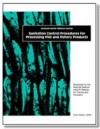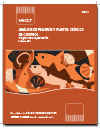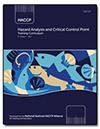Florida Sea Grant provides national leadership to ensure a safe seafood supply in the United States. Through its participation in the National Seafood HACCP Alliance for Training and Education, Sea Grant provides curriculum and essential training that helps seafood processors and importers meet federal food-safety regulations.
Curso sobre Procedimientos de Control Sanitario para el Procesamiento de Pescados y Mariscos
(SGR 122) (Spanish-language version of SGR 119). 2000. Esta guía es el manual de entrenamiento para el curso dictado con el propósito de asistir a la industria pesquera en el desarrollo e implementación de Procedimientos de Control Sanitarios como requeridos por la Administración de Drogas y Alimentos de Estados Unidos de América (US FDA). Estos mandatos requieren que los procesadores de productos pesqueros monitoreen los procedimientos de control sanitarios utilizados durante el proceso para documentar el cumplimiento con las prácticas y condiciones sanitarias aprobadas. Igualmente, los importadores de productos pesqueros deben verificar que los productos importados fueron procesados bajo los mismos requisitos HACCP de la US FDA que incluyen el monitoreo y registros de los procesos sanitarios.
Recientemente, la FDA ha actualizado las Buenas prácticas de manufactura vigentes o las BPM, como parte de una modernización más amplia de las normas de seguridad de los alimentos. Este








